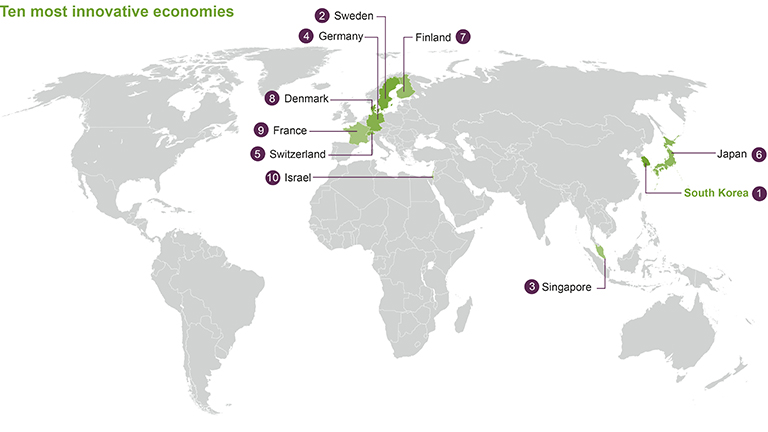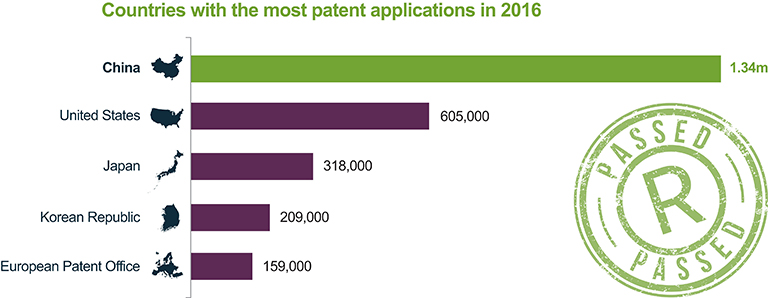When thinking of centres of technological innovation, the US – and Silicon Valley to be specific – is typically the first thing that springs to mind. After all that’s the place the Apples and Googles of this world still call home. However, that was yesterday. Fast forward to 2018 and the centre of gravity is shifting to Asia.
Asia showing its innovation muscle
This is borne out in international rankings such as the annual Bloomberg Innovation Index, where South Korea (for 2018) claimed the top spot – for the fifth year running. In the same assessment Singapore came third and Japan sixth. The US, meanwhile, has dropped out of the top 10. China, historically seen as a ‘copycat economy’, is 19th and climbing up the rankings – notably, ahead of G7 economies like Italy and Canada.

Source: Bloomberg 2018 Innovation Index.
Patent factory of the world
This creativity is clear in patent filings, a tangible indicator of future innovations. Here, China towers high above the rest, with over 1.3 million applications in 2016 – more than double that in the US. As for the companies with the greatest number of filings, Chinese telecoms business ZTE Corp listed the most patents, with local peer Huawei Technologies in second place.

Source: Statista, World Intellectual Property Organisation. Top five ranking of national patent offices with the most patent applications in 2016.
Can’t STEM the Asian tide
So what has changed? Well, a number of factors have converged to create real innovation momentum across Asia, perhaps the most obvious ones being technical education and state support.
In China, for example, there has been a veritable explosion of university graduates since 2000, a large proportion of whom fall in the ‘science, technology, engineering and mathematics’ category – known as the STEM subjects. According to the World Economic Forum, China generated an eye-watering 4.7 million STEM graduates in 2016, followed by 2.6 million in India (more than eight and four times the US figure, respectively).

Source: Statista, World Economic Forum. Recent graduates in Science, Technology, Engineering and Mathematics (2016).
Many Asian governments have been supportive of research & development through generous funding and subsidies for high-priority technologies. This aid is often critical during incubation phases, before technologies are commercialised, giving entrepreneurs necessary breathing space.
Of course, there are also some cultural elements that have driven the underlying tech surge, including an attitude in many Asian countries of ‘better to try and fail, than not try at all’, not to mention a huge consumer appetite for tech – as evidenced by phenomenal adoption of smartphones, social media and e-commerce across Asia. Interestingly, of China’s 730 million internet users, some 90% access the web by smartphone rather than PCs, which explains the significant focus of local tech companies on mobile- based applications and services.
Asia: future proof
No-one can safely predict which innovations will be the winners, especially given the fast pace of change and attendant disruption. However, there is no doubt that the economic importance of technology is likely to continue to grow and that investors wanting exposure to the best long-term opportunities in this area need to be aware of where the action is moving.
Asian companies are really showing their mettle here, and although discernment is critical in such a fashionable area of the stockmarket, it is clear to us many of tomorrow’s global leaders will hail from this
region.
By Martin Currie Investment
Andrew Graham, Head of Asia for Martin Currie will be speaking at our Markets 2018 conference on opportunities to invest your money in the far east. Get your tickets here.

